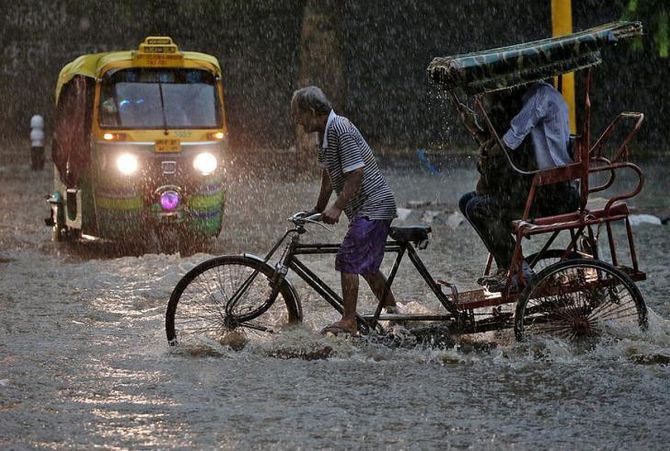 | « Back to article | Print this article |
Though early days, meteorologists point towards a neutral La Nina during the initial phase of the four-month monsoon season this year that starts from June.

If this holds true, by the time the rains hit the mainland, it could mean there would be one less reason to worry about the prospects of the monsoon this year.
Weathermen said making any accurate prediction of how El Nino will behave and what impact it can have on the progress and distribution of rains is difficult to say at this point.
A clear picture will emerge around late May or early June.
Going by past trends, both India Meteorological Department (IMD) and Skymet are expected to come out with the first forecast for 2021 southwest monsoon sometime in April.
“The La Nina is presently at a neutral state and is expected to remain so in the months preceding the southwest monsoon.
However, whether it continues to remain neutral is difficult to say as of now because of a variety of factors.
These include the ‘Spring Barrier,” Mahesh Palawat, vice-president of meteorology and climate change at Skymet Weather said.
According to , spring marks the shifting of the sun from the Southern Hemisphere to the Northern Hemisphere.
The sun crosses the Equator around March 20, which is known as Spring Equinox.
With this, water starts heating up with the sun drawing closer.
“The rise in the sea surface temperatures reduces its gradient during this phase.
"This leads to weaker coupling between ocean and atmosphere.
"Therefore, the weather models find it harder to make an accurate forecast for El Niño conditions.
"Reading the meteorological conditions and subsequent predictability of numerical models is the lowest during spring,” Skymet said in a report published in its website sometime back.
Nonetheless, a neutral La Nina and expected absence of El Nino could be considered positives for the southwest monsoon at this stage.
El Nino has had an overbearing impact on Indian rains and 80 per cent of El Nino years have seen below-normal rains in the country.
Sixty per cent of this have been outright drought years.
The southwest monsoon, which starts from June and ends in September, is a lifeline for Indian agriculture.
It is also a key determinant in the broader economic sense as it provides over 70 per cent of the annual precipitation that the country gets.
In 2021, the southwest monsoon season ended on September 30 with rainfall totaling around 87 centimeters.
This was just 1 per cent below the Long Period Average of 88 cm of 1961-2010 (99 percent of its LPA).
The year 2021 was the third consecutive year that the country recorded rainfall in the normal and above category.
It was above normal in 2019 and 2020.
India received 9 per cent lower rainfall than normal up to the end of August.
It was a third more than normal in September. This narrowed the deficit to 1 per cent, the IMD had said.
In fact, late rains in September were estimated to be around 260.44 millimeters.
This was among the highest September rains in this century.
The last best September rains was in 2019 when the country had received around 260.44 millimeters of rain.
Normally, India should receive around 170 millimeters of rain in September.
But this year, it received 230 millimeters, which was around 35.2 per cent more than normal.